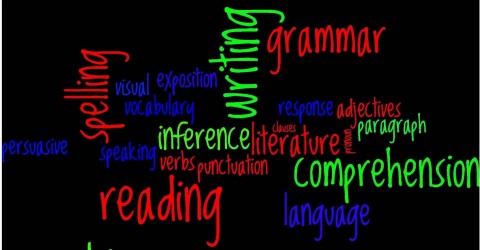From analysing the NAPLAN data, and before that the ELLA data, it is clear that many students struggle with inferential reading. Time and time again it comes up as an area that needs addressing with our students. What is inference and how do we go about teaching it to our students?
Inference is when you use the clues in the story along with your own experiences to discover meaning that is not directly stated by the composer. We read “between the lines” to strengthen our understanding. The example I like to use with students is: “The sky was blue and there was not a cloud to be seen. Everyone was outside – at the beach, at the park, in the garden.” What was the weather like? Answer – it was warm and sunny, probably summer. How do we know this if it isn’t said specifically? What clues are given? Clues: blue sky, beach, no clouds etc.
We need to explicitly teach students about inference and how they use this when they read to gain maximum understanding of what they are reading. We, as teachers, need to help students be aware of the process of inference if they are going to develop their inferential reading skills.
So how do we do this? Children can start to explore the concept from looking at pictures.
What season is it?
How can you infer that from the picture?
What type of restaurant are they in?
Is she enjoying her dinner?
I certainly think we should be teaching students the words “infer” and inference” as soon as we start to teach it. Talk about the clues in the picture, in the paragraph and get them to articulate (orally at first and then in writing) how these are clues. In other words get them to articulate the thought process and of course this means you need to regularly and explicitly model that thought process for them. Even good readers who do this intuitively will benefit from having the actual skill articulated to them so that as the text material gets more complex they too can found ways into the text using the clues available.
Inference Questions:
- What is my inference?
- What information clues did I use to make the inference?
- How good was my thinking?
Inference can help students to understand a new word, work out who a character is and to understand the character’s feelings and connect the material to their own world. It takes comprehension from the literal (here) to the inferential (hidden) which in turns allows students to access the interpretative (head) and apply what they have read.
There are many great PowerPoint resources, like the one above on SlideShare – definitely recommend you take a look!
Need some ready-made resources and some ideas for teaching inference to your students?
I recommend you check these sites out:
Ethemes – University of Missouri site
Brain Pops – lots of great ideas and activities
Into The Book – book suggestions as well as strategies and work sheets
TV411 – Nice on-line interactive activity for learning about inference
Have Fun Teaching – fantastic worksheets for K – 6
Study Zone – interactive activity
Like To Read – Lesson Ideas from an experienced teacher
Busy Teacher Cafe – great site for all aspects of the “Super 6” including inference
Minds in Bloom – great resources, lesson ideas etc
Inference Riddles – help get the students thinking
Effective Teaching of Inference – Research Paper by Anne Kipsal
Leave a comment
No comments yet.



Leave a comment